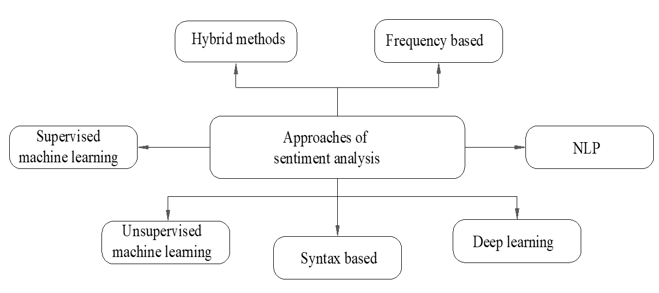Design and Analyze the Machine Learning Based Sarcasm Prediction Model for Social Media Context
Keywords:
Social media context, supervised machine learning, feature extraction and selection, sarcasm detection, sentiment classificationAbstract
Sentiment Analysis examines the predominance of sarcastic language and its difficulties detecting sentiment in the text. The identification of sarcasm in the text is the focus of automatic sarcasm detection. Sarcasm recognition has been more popular in recent years and has extensive use in sentiment analysis. In this paper, we proposed sarcasm detection using machine learning. In the first phase, data has collected from social media sources such as Twitter and other synthetic datasets. The policy-based data filtration technique is used for data pre-processing and generating the normalized data vectors. The different feature extraction and selection approaches have been used for hybrid feature selection, such as TF-IDF, NLP features, Dependency features and lexicon- based features from the entire context. The various machine learning classification algorithms have been used to predict positive, negative and neutral sarcasm. The WEKA 3.7 machine learning framework has been utilized for classification. As a result, SVM produces higher classification accuracy of 95.60% over the conventional machine learning classifier.
Downloads
References
Menaria HK, Nagar P, Patel M. Tweet sentiment classification by semantic and frequency base features using hybrid classifier. InFirst International Conference on Sustainable Technologies for Computational Intelligence 2020 (pp. 107-123). Springer, Singapore.
Basiri ME, Abdar M, Cifci MA, Nemati S, Acharya UR. A novel method for sentiment classification of drug reviews using fusion of deep and machine learning techniques. Knowledge- Based Systems. 2020 Jun 21;198:105949.
Jelodar H, Wang Y, Orji R, Huang S. Deep sentiment classification and topic discovery on novel coronavirus or COVID-19 online discussions: NLP using LSTM recurrent neural network approach. IEEE Journal of Biomedical and Health Informatics. 2020 Jun 9;24(10):2733-42.
Bai X, Liu P, Zhang Y. Investigating typed syntactic dependencies for targeted sentiment classification using graph attention neural network. IEEE/ACM Transactions on Audio, Speech, and Language Processing. 2020 Dec 2;29:503-14.
Pathak AR, Agarwal B, Pandey M, Rautaray S. Application of deep learning approaches for sentiment analysis. InDeep learning-based approaches for sentiment analysis 2020 (pp. 1-31). Springer, Singapore.
Vashishtha S, Susan S. Fuzzy interpretation of word polarity scores for unsupervised sentiment analysis. In2020 11th international conference on computing, communication and networking technologies (ICCCNT) 2020 Jul 1 (pp. 1-6). IEEE.
Asghar MZ, Khan A, Zahra SR, Ahmad S, Kundi FM. Aspect-based opinion mining framework using heuristic patterns. Cluster Computing. 2017:1-9.
Schouten K, Van Der Weijde O, Frasincar F, Dekker R. Supervised and unsupervised aspect category detection for sentiment analysis with co-occurrence data. IEEE transactions on cybernetics. 2017 Apr 14;48(4):1263-75.

Downloads
Published
How to Cite
Issue
Section
License

This work is licensed under a Creative Commons Attribution-ShareAlike 4.0 International License.
All papers should be submitted electronically. All submitted manuscripts must be original work that is not under submission at another journal or under consideration for publication in another form, such as a monograph or chapter of a book. Authors of submitted papers are obligated not to submit their paper for publication elsewhere until an editorial decision is rendered on their submission. Further, authors of accepted papers are prohibited from publishing the results in other publications that appear before the paper is published in the Journal unless they receive approval for doing so from the Editor-In-Chief.
IJISAE open access articles are licensed under a Creative Commons Attribution-ShareAlike 4.0 International License. This license lets the audience to give appropriate credit, provide a link to the license, and indicate if changes were made and if they remix, transform, or build upon the material, they must distribute contributions under the same license as the original.





